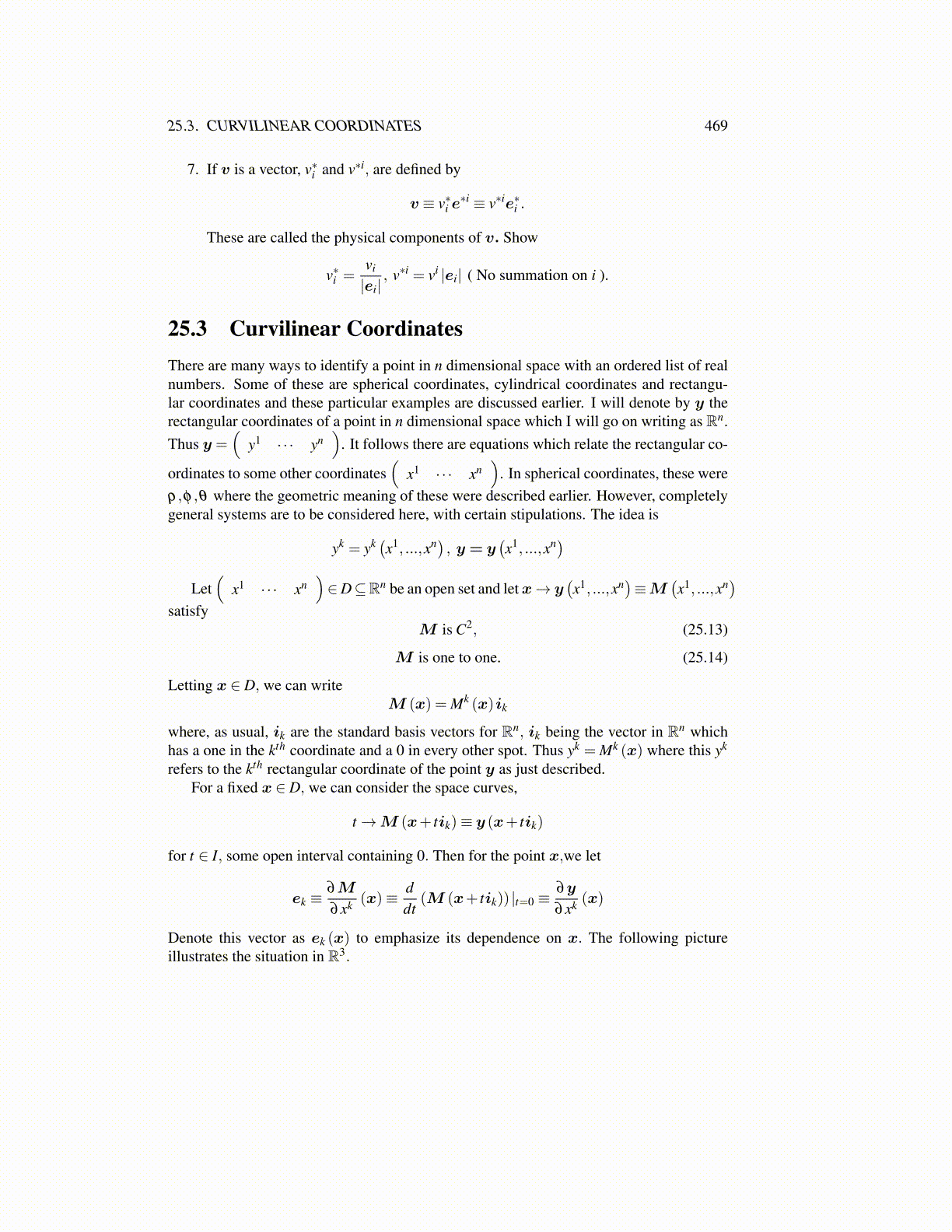
25.3. CURVILINEAR COORDINATES 469
7. If v is a vector, v∗i and v∗i, are defined by
v ≡ v∗i e∗i ≡ v∗ie∗i .
These are called the physical components of v. Show
v∗i =vi
|ei|, v∗i = vi |ei| ( No summation on i ).
25.3 Curvilinear CoordinatesThere are many ways to identify a point in n dimensional space with an ordered list of realnumbers. Some of these are spherical coordinates, cylindrical coordinates and rectangu-lar coordinates and these particular examples are discussed earlier. I will denote by y therectangular coordinates of a point in n dimensional space which I will go on writing as Rn.Thus y =
(y1 · · · yn
). It follows there are equations which relate the rectangular co-
ordinates to some other coordinates(
x1 · · · xn)
. In spherical coordinates, these wereρ,φ ,θ where the geometric meaning of these were described earlier. However, completelygeneral systems are to be considered here, with certain stipulations. The idea is
yk = yk (x1, ...,xn) , y = y(x1, ...,xn)
Let(
x1 · · · xn)∈D⊆Rn be an open set and let x→ y
(x1, ...,xn
)≡M
(x1, ...,xn
)satisfy
M is C2, (25.13)
M is one to one. (25.14)
Letting x ∈ D, we can writeM (x) = Mk (x)ik
where, as usual, ik are the standard basis vectors for Rn, ik being the vector in Rn whichhas a one in the kth coordinate and a 0 in every other spot. Thus yk = Mk (x) where this yk
refers to the kth rectangular coordinate of the point y as just described.For a fixed x ∈ D, we can consider the space curves,
t→M (x+ tik)≡ y (x+ tik)
for t ∈ I, some open interval containing 0. Then for the point x,we let
ek ≡∂M
∂xk (x)≡ ddt
(M (x+ tik)) |t=0 ≡∂y
∂xk (x)
Denote this vector as ek (x) to emphasize its dependence on x. The following pictureillustrates the situation in R3.